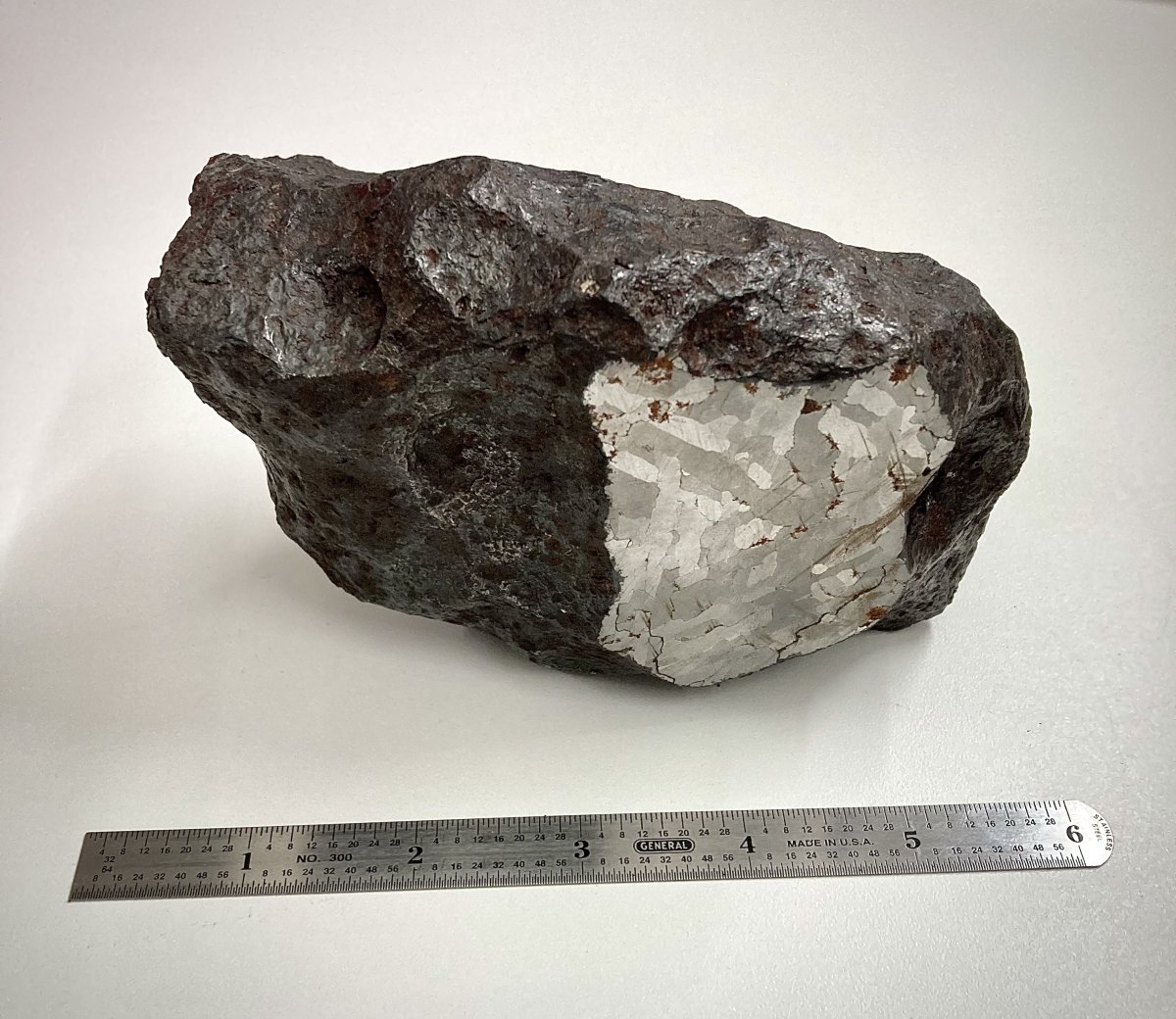Recovery and Identification of Minnesota’s 10th Known Meteorite

Written by Layven and Anastasiia Reguero, E. Calvin Alexander, Jr. and Craig Zlimen.
In May 2023 Layven and Anastasiia Reguero purchased two rocks at an estate sale with the hope that the objects might have scientific importance due to their extraterrestrial appearance. The larger object weighed 3,389.9 grams and the smaller weighed 433.2 grams. The family of the deceased estate owner reported that the objects were discovered on the family farm in 2006 near 48° 26' 46.6" N, 96° 10' 10.10" W (about 1.5 km NNW of Middle River) in Marshall Co., MN. The two rocks had been placed in a cardboard box soon after their discovery where they had remained until the estate sale. It is unknown if the fall was witnessed and no other information about the rocks could be obtained. The man who found the objects was a machinist whose family worked in the Mesabi Iron range.

After purchasing the two rock samples, Layven contacted Professor Emeritus E. Calvin Alexander, Jr., Curator of Meteorites, at the ESCI Department. After reviewing photographs of the samples, Calvin conducted portable X-ray fluorescence analyses (pXRF) of the objects. The smaller object’s composition indicated that it was probably a artificial slag "meteorwrong". However, the (surface) pXRF data was consistent with the larger object being an iron meteorite. Specifically, the larger object was an iron/nickel alloy like iron meteorites.
Calvin arranged a meeting with himself, Layven, Anastasiia, Craig Zlimen (meteorite expert and owner of Minnesota Meteorites), and Dr.Jennifer Mitchell (a meteorite and electron microscope expert who just that week moved from Australia to the UMN to accept joint appointments as the ESCI’s Electron Microprobe Manager and with the UMN Characterization Facility in the College of Science & Engineering). After a fascinating discussion and observation of hundreds of extraterrestrial specimens, Craig offered to professionally cut the new find with an ultrathin (0.15 mm) diamond-coated wire saw. Two cuts resulted in a main mass of 3,226.0 g, an end cap of 123.9 g, and a classification slice of 20.1 g. Craig then etched and polished cut surfaces revealing a Widmanstätten crystal pattern in the nickel iron (see photo below). That pattern confirms that the object is an iron meteorite.

The Meteoritical Society is the international curator of meteorite names. The Society requires that 20% or 20 g (whichever is smaller) of each named meteorite be deposited with an established scientific meteorite collection. In June 2023 the 20.1 g internal slice was sent to Professor Chris Herd at the University of Alberta’s Institute for Space Science, Exploration and Technology. Dr. Herd is an internationally distinguished expert in Martian meteorites and the classification of iron meteorites, amongst other things. (Iron meteorites are classified based on their content of trace siderophile elements. Meteorites are named for geographic features nearest to where they land.) With great excitement we await classification and results of a submission to the Meteoritical Society’s naming committee for official confirmation. We are suggesting that the meteorite be named the “Middle River” Iron Meteorite -- Minnesota’s 10th known meteorite.